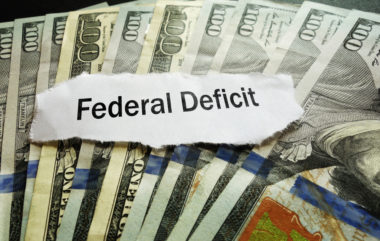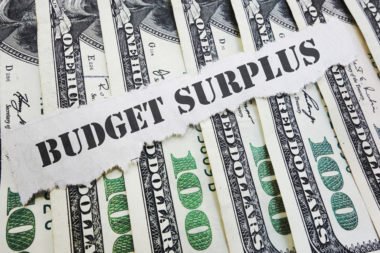If you’re anything like me, one of your biggest pet peeves is when people interject their opinion about what you’re eating.
Them: “Burgers are bad for you! So much fat…”
Me: “Fine, Tracy, but they taste great and I’m going to enjoy this anyways!”
Of course, in all these squabbles, I’ve heard some repetition. Sugar, fatty foods, and processed foods seem to be universally viewed as “bad.” But where is all the research on this information?
Plus, with my twenty six years on this earth, I’ve seen my fair share of “fad diets” come and go. How are any of them to be trusted if they’re most likely going to be labeled obsolete down the road? And diets get costly; so how can anyone expect to reasonably go on a diet for their health when they’re not making a whole lot of money in the first place?
I decided to dive in and see what is really recommended for consumption. What should we eat, what should we avoid, and how can we make it work with our budget?
Table of Contents
The Changing Nemesis
As one writer with the New Yorker found: the food nemesis changes frequently. In one decade, it will be fatty foods, and in the next, it will be sugar and sweeteners.
Right now, we’re in the anti-sugar era. With the spotlight on conditions like obesity and heart failure, there has been an increased emphasis on the negative effects of sugar addiction. This has led to a crack downs on the sale of extra large soda drinks in New York and the UK, plus a general shame for snacks and food that contain high fructose corn syrup.
Yet, as Michael Specter, the writer with the New Yorker wrote: “For sugar to exist as a normal, safe part of our food, all we need to do is maintain balanced diets. The problem, of course, is that we don’t.”
Everything in Moderation
Remember those short lived commercials about corn syrup? How small amounts of corn syrup weren’t bad for the body? Well that principle — although marketed poorly in those commercials — remains true: small, controlled amounts of any food substance can be beneficial to the body.
This is where many of the “fad diets” fall short, as they often suggest the exclusion of certain ingredients for a prolonged period of time. Sociology researchers with the University of California, Santa Barbara, note that many fad diets fail: “they [fad diets] are restrictive and promise short term results. Body fat cannot be lost in a short period of time because your body will burn glycogen from carbohydrates long before it burns body fat, meaning that the body will burn off the energy from food before it will burn actual body fat.” They also note that many fad diets can cause physical and mental damage, and can lead to serious eating disorders.
The Atkins Diet was an early 2000’s trend that did just that; excluding carbohydrates or any sort (sugars, starches, and fibers). Although the diet has worked wonders for some, the extremely limiting aspect of the diet can be harmful to the body in the long term. Carbohydrates help the body function, and most of them are extremely important. They provide the necessary energy many of us need to move around, and excluding all of them can cut back on our body’s ability to stay active, according to the Mayo Clinic.
In this way, fad diets should be avoided. Instead, learn to moderate your intake instead of jumping on the latest trending diet train.
Building Your Diet
There are also other things to consider in terms of consumption, according to Psychology Today: “Although sugar is linked to obesity, we can’t focus on it to the exclusion of other factors, including genetics, socioeconomic issues, total calorie intake…, portion size, the rise of fast food, and sedentary lifestyles.” Age is also a factor to keep in mind when choosing a diet, as our metabolism slows down as we get older.
Michael Specter, with the New Yorker, has more advice on the best foods to consider when cutting back: real food.
“Real food, unlike sugar, is its own best regulatory system. Four apples contain sixteen teaspoons of sugar—way more than the recommended daily limit for added sugars. But few people want to eat that many apples, because the fruit contains fibre and other nutrients that help tell our bodies when we are full. Turn those four apples into juice, however, and you can circumvent the body’s signals, basically mainlining the excess sugar directly into your bloodstream. You get the bad stuff without the good stuff.”
It’s also important to consider the cost of your potential diet choice. Eating healthy often comes with a heftier price tag. One study from the UK, shared in Newsweek in 2014, found that eating healthy can cost an extra $1.50 per day. For some, this might not be an issue. But for single mothers who have an unsteady flow of income, dieting can seem a bit unrealistic. However, the benefit of taking care of your body now, might lead to less medical bills down the road. The monetary trade off can be manageable if you keep your end-goal in mind.
Reading the Label
Reading labels can be one of the best ways to formulate healthy eating habits. It’s important to look for code words that might relate to the ingredient you are trying to limit.
Specter’s example from his New Yorker piece is sugar: “…sugar by any other name is still sugar: agave, honey, castor sugar, and even the much reviled high-fructose corn syrup all have similar effects. Eat too much of any one of them and we overtax our insulin, the hormone in our bodies that breaks down sugar, metabolizes it, and stores what we don’t need. That can lead to diabetes, liver disease, and other ailments.”
Besides the big target of sugar, other foods to limit are processed foods and flavored or sugar-substitute drinks. We all know soda is full of sugar, but juices, sweetened teas, and more can have just as much sugar in them. Try to avoid drinking more than one a day, if any at all.
When it comes to processed foods, if the ingredient list takes up more than a few inches of space (and includes words you can’t pronounce), then you might want to pass it up for something else. A bunch of these foods are also heavy in sugars with strange names (dextrose, monosaccharides, etc) and fillers, making them dangerous for when you’re trying to control your intake. Time Magazine discusses the potential hidden dangers of processed food in a 2015 article on the topic: 61% of your Calories are from Highly Processed Foods.
Don’t religiously count calories when you’re dieting. Not all calories are the same. Take it from the scientist who spoke with WebMD about his 2012 study, David S Ludwig MD, PhD: “From a metabolic perspective our study suggests that all calories are not alike. The quality of the calories going in is going to affect the number of calories going out.” An example of this is if you’re cutting back on sugars and eating high fibers instead, your body’s metabolism will slow down due to the change in calorie type, making it harder to burn off calories that you intake. This can reverse the desired effects of a diet.
Finding an Answer
The ultimate and best way to control your diet is to cook at home with raw and real ingredients. Cooking from home will also give you the added benefit of being able to clearly monitor what foods you’re eating and can help you save money from not eating out.
For the majority of Americans, the temptation of eating out can be fairly strong: less time, no cleanup, and can often be cheaper sounding than eating at home. But the truth is, you’ll save hundreds of dollars a year on food if you can cook your own meals. One author with Forbes tried it and managed to save almost $200 within three months.
Once you start cutting back on the boxed meals and eating out, you’ll notice a significant improvement in your ability to monitor what you eat, and you’ll get to enjoy your own cooking while saving money!
If you’re fighting to get control of your body — whether that means building muscle or losing weight — don’t fret over which diet to jump on or which fad to believe. Instead, just enjoy what you eat, and remember to keep everything in moderation. Our bodies were meant to enjoy and thrive off food. Don’t be afraid to treat yourself!
Image source: https://www.pexels.com/





